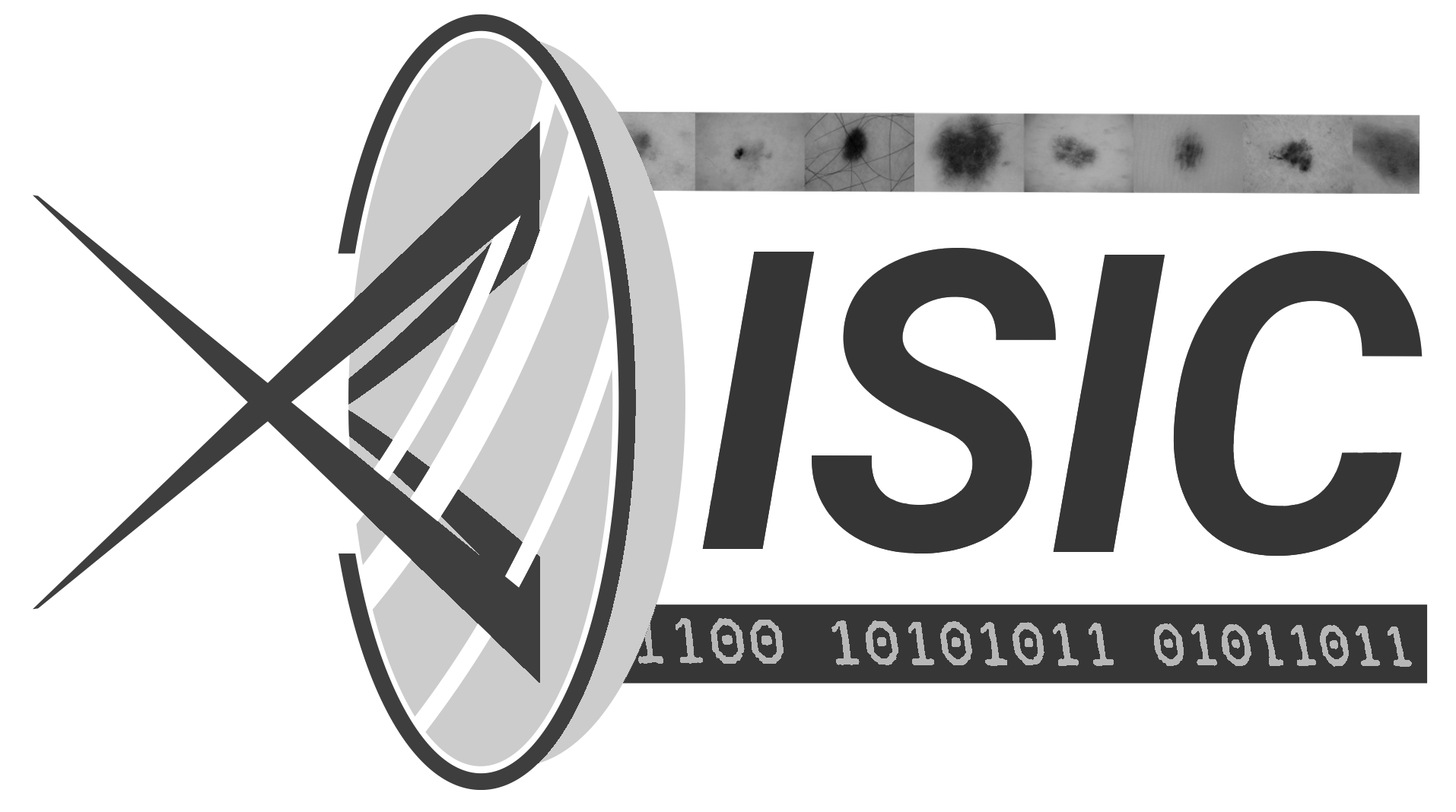
Artificial Intelligence Working Group
Goal
The AI working group's goal is to promote the development of accurate and effective computerized systems to aid melanoma diagnosis and clinical decision support by creating resources for and engaging the dermatology and computer science communities.
We engage our stakeholder communities through meetings, publications and conferences. We also host AI grand and live challenges.
Accomplishments
Publications
Based on our AI challenges, over 1,000 scientific papers were written by ISIC members and other inspired individuals from various communities. Publications our members were involved in include:
Rotemberg, Veronica, et al. "The role of public challenges and data sets towards algorithm development, trust, and use in clinical practice." Seminars in cutaneous medicine and surgery. Vol. 38. No. 1. 2019.
Workshops and Conferences
AI Challenges
ISIC Archive
Our primary focus is the development of the ISIC Archive, a large and expanding open source public access archive of annotated skin images. The Archive currently contains over 100,000 images.
Goal
The AI working group's goal is to promote the development of accurate and effective computerized systems to aid melanoma diagnosis and clinical decision support by creating resources for and engaging the dermatology and computer science communities.
We engage our stakeholder communities through meetings, publications and conferences. We also host AI grand and live challenges.
Publications
Based on our AI challenges, over 1,000 scientific papers were written by ISIC members and other inspired individuals from various communities. Publications our members were involved in include:
Rotemberg, Veronica, et al. "The role of public challenges and data sets towards algorithm development, trust, and use in clinical practice." Seminars in cutaneous medicine and surgery. Vol. 38. No. 1. 2019.
Workshops and Conferences
AI Challenges
ISIC Archive
Our primary focus is the development of the ISIC Archive, a large and expanding open source public access archive of annotated skin images. The Archive currently contains over 100,000 images.
Accomplishments
Leader

Veronica Rotemberg, MD, PhD
Memorial Sloan Kettering Cancer Center
New York, NY, USA
New York, NY, USA
Memorial Sloan Kettering Cancer Center
Veronica Rotemberg, MD, PhD

Leader
Working Group Members
Hospital Clinic of Barcelona, Spain
Barcelona, Spain
Josep Malvehy, MD
Royal Prince Alfred Hospital
Sydney, Australia
Pascale Guitera, MD
The University of Queensland
Brisbane, Australia
H. Peter Soyer, MD, PhD
Medical University of Vienna, Vienna, Austria
Vienna, Austria
Philipp Tschandl, MD, PhD
Institute for Systems and Robotics, Instituto Superior Técnico
Lisbon, Portugal
Catarina Barata, PhD
The University of Queensland
Brisbane, Australia
Bridgid Betz-Stablein, PhD
University of Central Arkansas
Conway, AR, USA
M. Emre Celebi, PhD
The Hospital Clinic of Barcelona
Barcelona, Spain
Marc Combalia
Emory University
Atlanta, GA, USA
Roxana Daneshjou, MD, PhD
Emory University
Atlanta, GA, USA
David Gutman, MD PhD
Memorial Sloan Kettering Cancer Center
New York, NY, USA
Allan Halpern, MD, MSc
Kitware
Clifton Park, NY, USA
Brian Helba
Centre of Excellence in AI, AGH University of Science and Technology
Poland
Joanna Jaworek-Korjakowska, Univ. Prof.
Medical University of Vienna
Vienna, Austria
Harald Kittler, MD
Memorial Sloan Kettering Cancer Center
New York, NY, USA
Kivanc Kose, PhD
Memorial Sloan Kettering Cancer Center
New York, NY, USA
Nicholas R. Kurtansky
Andreas Sygros Hospital of Skin and Venereological Disease
Athens, Greece
Konstantinos Liopyris, MD
I Dermatology Clinical
Seoul, South Korea
Han Seung Seog, MD
Vanderbilt University Medical Center
Nashville, TN, USA
Eric Tkaczyk, MD, PhD
Memorial Sloan Kettering Cancer Center
New York, NY, USA
Jochen Weber
Department of Computing and Mathematics, Manchester Metropolitan University
UK
Moi Hoon Yap, PhD
University Hosptial Zurich, Zurich, Switzerland
Zurich, Switzerland
Lara Valeska Maul, MD, FEBDV
Next Steps
Continue to develop additional functionality in the Archive platform and scale the size and complexity of the Archive.
Add clinical (standard photography) close-up images to the current collection of mostly dermoscopic images and increase the ethnic/racial and diagnosis diversity of the Archive.
Continue to crowd source the annotations of the images in the Archive for dermoscopy attributes, in partnership with the Education Working Group and with Centaur Labs.
Support and host Grand Challenges and Live Challenges.
Efforts are underway to assemble an annotated collection of images of lesions captured sequentially to permit inclusion of change-over-time as an additional diagnostic variable.Explore multi-modal images (e.g., dermoscopy together with clinical +/- RCM +/- histology).
Engage the relevant communities with conferences and publications.
Among these are an upcoming workshop at CVPR and organizing special issues on skin imaging for Elsevier's Medical Image Analysis (MIA) journal and the Journal of Biomedical and Health Informatics.

